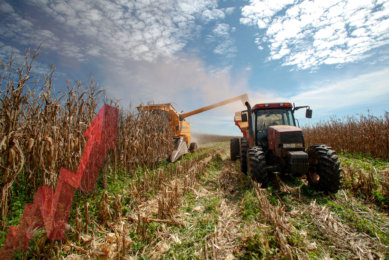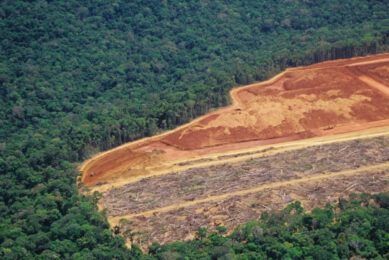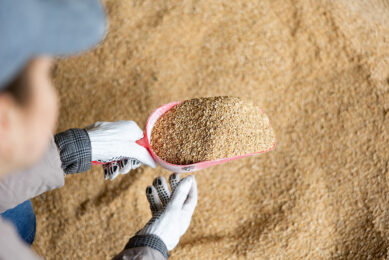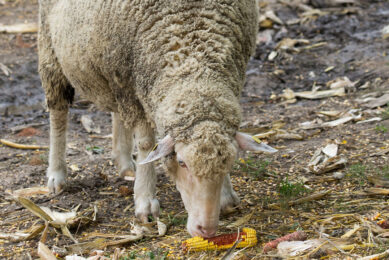Oxidation key issue in use of oils and fats for feed
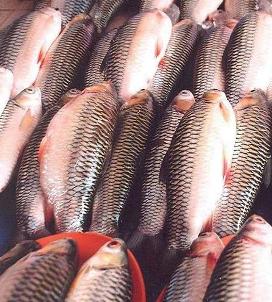
Oils and fats are essential ingredients in feed formulations used in the poultry, pig and aquaculture industry. A wide variety of different lipid sources are used in agrifoods applications, including vegetable oils. But what about their quality?
The most important factor controlling the quality and characteristics of feed is still the quality of the raw materials used. Good quality feed can not be produced without good quality raw materials, and this wisdom is also related to the oils and fats used during feed production.
Lipid sources can have many origins, such as soybean, rapeseed, palm oil and palm free fatty acids (PFAD), fat blends, animal fats, fish oil and many more products, sometimes depending on local availability. In recent years, there has been an increased focus on the quality and the composition of fat sources used in the agrifoods industry. It was recognised that the type of fat used considerably affects animal performance. Feed fats are excellent sources to provide dietary metabolisable energy to the animal.
The nutritional parameters of oils and fats, such as digestibility and absorption, are related to their oxidative quality. Oils and fats are especially prone towards quality degradation caused by the lipid autoxidation process, which lowers the nutritional value of the feed and will result in reduced animal performance. In addition, the essential fatty acids such as linoleic- and linolenic acid have the highest level of unsaturation and will be most prone to oxidation. With high raw material prices it is thus even more important to focus on the oxidative status of the lipids and maintain high lipid quality.
Analysing oxidative status
The oxidative status of oil samples is determined preferably by analysis of the peroxide value (primary oxidation products) showing the onset of oxidation and the TBA-value (secondary oxidation products), which is a marker for the volatile oxidation products. This article gives a representative view on the general quality characteristics of the lipid sources currently used in the feed industry across Europe.
The Kemin Agrifoods Customer Service laboratory has analysed more than 570 oil and fat samples for their oxidative status over the last couple of years. All samples were taken across Europe from oil and fat lots that were used during feed production. A breakdown of the number of samples analysed per lipid source is shown in Table 1. Most samples analysed were commercial fat blends, fi sh oil and soybean oil, followed by animal fat, PFAD and palm oil samples.
All oil samples were analysed for their peroxide and TBA-value. The peroxide value is a traditional analysis frequently used in the feed industry to check the oxidative parameters of oils and fats. This analysis offers the advantage of being fast and gives an indication of the first lipid oxidation products.
The peroxide value was distributed in four categories. Samples in:
• Category I have a peroxide value < 5 meq/kg indicating no-onset of oxidation
• Category II score a peroxide value between 5–10 meq/kg indicating onset of oxidation
• Category III stand for a peroxide value between 10– 20 meq/kg showing progressed oxidative deterioration
• Category IV represent a peroxide value > 20 meq/kg indicating severe oxidative deterioration
The relative occurrence of the samples over the four categories is presented in Figure 1.
Rancidity occurs
Samples in those four categories were found for all 6 lipids sources, irrespective of their fatty acid composition.
For soybean oil and fat blends around 1 out of 3 samples had a peroxide value >10 meq/kg, which indicates oxidative reactions were ongoing. This confirms that soybean oil and fat blends are quite susceptible to oxidative deterioration. Although it is generally accepted that palm oil is very stable, around 25% of all palm oil samples had a peroxide value >10 meq/kg, which was unexpected. The highest fraction of samples with a peroxide value >20 meq/kg was reported for fish oil. All oil samples were also analysed for their TBA-value, which is a measure for the level of secondary oxidation products. Those secondary oxidation products are formed upon breakdown of the peroxides and are responsible for off-flavours. The TBA-value is expressed by the level of malondialdehyde (MDA), used as a marker for the total level of aldehydes.
The TBA-values of the oil samples were distributed over four categories. For fish oil a different categorization was made; being susceptible to oxidation. Samples in:
• Category I having a TBA-value <1 ppm MDA – indicating little formation of secondary oxidation products (fi sh oil <2 ppm MDA)
• Category II had a TBA-value 1-2 ppm MDA, showing the onset of oxidation (fi sh oil 2-5 ppm MDA)
• Category III had a TBA-value 2-4 ppm MDA, indicating pronounced oxidation (fi sh oil 5-10 ppm MDA)
• Category IV had a TBA-value >4 ppm and were used in combination with the TBA-value. Although the peroxide values were relatively low, it was not a good indicator of their quality. It was quite surprising to observe their rather variable quality, as 3 out of 4 samples had a TBA-value above 1 ppm MDA, which confirms that oxidative deterioration already took place.
Marine oils are known to be very sensitive to degradation due to the high level of poly-unsaturated fatty acids. Some marine oil samples had a good oxidative status, whereas in many other samples considerable oxidation already had taken place, affecting the polyunsaturated level and nutritional value of these lipids.
Large variety in fat quality
This overview confirms the large variety in fat quality that can be observed across the industry. For all fat sources used an adequate quality control system is crucial to monitor the quality of the purchased fats. Inevitably, there will be some variations in oxidative status between fat deliveries, the challenge being to minimise these variations.
To counteract the autoxidation, Kemin Agrifoods uses antioxidant nutricines which stabilise the oils and fats. These products help maintain the nutritional quality of the lipids. Once oils and fats are sprayed onto the compound feed they are exposed to an extremely large surface area and metal ions that will promote the oxidative reactions. With the increasing market prices for oils and fats a stabilisation of the fat with antioxidant nutricines is even more important and it is probably a good thing to secure lipid quality and optimise animal performance.




